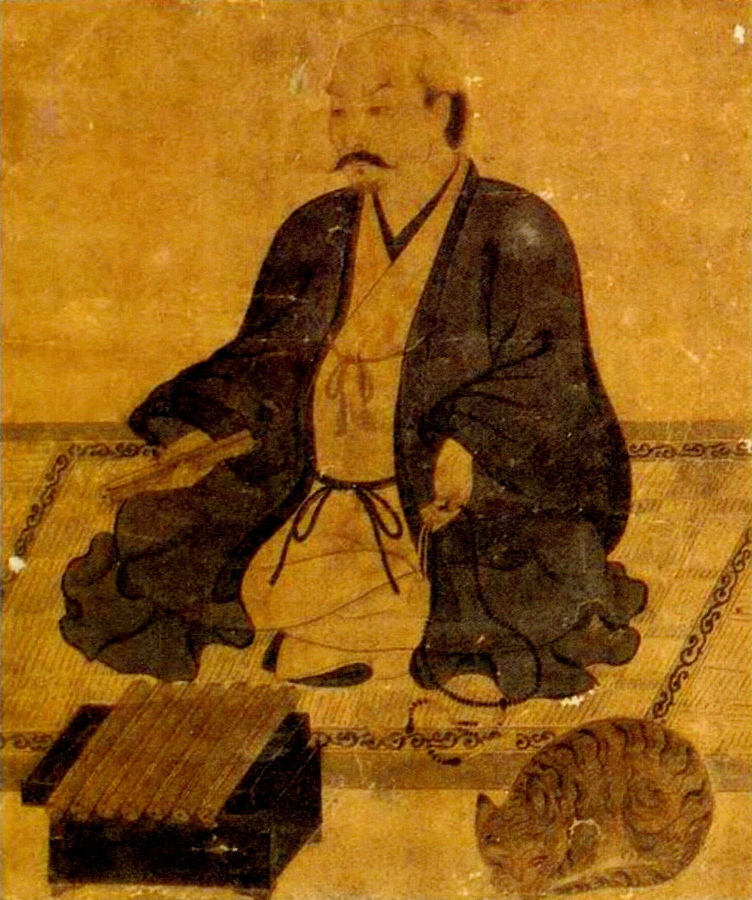During Japan’s Sengoku (Warring States) period, there was one name that instantly struck fear into the hearts of even the most powerful feudal lords: “Oda,” as in the merciless master maneuverer Oda Nobunaga (1534–1582). Interestingly, around the same time, there was a name that elicited the exact opposite reaction, and it was also “Oda” — as in Oda Ujiharu, master of Oda Castle in modern-day Ibaraki Prefecture, whose constant losing streak made him known as the weakest Sengoku samurai warlord. Why, then, do so many people admire him today? Let’s find out. Born sometime in the 1530s (perhaps even in 1534, though that may have been an invention to draw parallels between Ujiharu and Nobunaga), the weakest samurai warlord in history has no connection to the Demon King. Their names are written with different characters and point to two vastly different lineages. Nobunaga hailed from a relatively minor family in Owari (modern-day Aichi), while Ujiharu was connected to the Hatta clan that once was a major player in the Kamakura shogunate. He was also a close relative of many important figures in the Ashikaga shogunate… Ujiharu lost Oda Castle so many times because he made bafflingly bad military decisions. During his war with the Satake clan, Ujiharu’s chief strategist — on his deathbed — begged his lord to barricade himself and his army in the fortification, wait for reinforcements and not meet the enemy on the field. The castle’s main defenses were its walls, moats and nearby rivers. Outside that, Oda Castle was surrounded by flatlands. And yet, ignoring his strategist’s dying words, the lord of Hitachi refused to stay put and challenged the Satake to open combat. He was then cut off from his base by the enemy’s hidden forces, allowing them to take Oda Castle. This was the second time that this exact same strategy lost Ujiharu his ancestral home. Some other wise man once said: “Fool me once, shame on you. Fool me twice, shame on me.” However, Ujiharu’s blind charges may actually have had a noble purpose…
| Alias Oda Ujiharu |
| Real Names/Alt Names Oda Ujiharu |
| Characteristics Samurai, Historical Figures, The Renaissance, Japanese |
| Creators/Key Contributors ○ |
| First Appearance Historical figure (b. 1534 – d. 1602) |
| First Publisher ○ |
| Appearance List Historical and Geographical Dictionary of Japan (1906 [1st ed.], enlarged 1910) by Edmond Papinot; Shinpen Hitachi Kokushi (新編常陸国誌, Newly Compiled Gazetteer of Hitachi Province, 1911) by Nakayama Nobunao; Chiba Denkōki, Oda Gunki, Oda Ten’an Ki, Bōsō Gunki, Satomi Kudai Ki (千葉伝考記・小田軍記・小田天庵記・房総軍記・里見九代記, Chiba Tradition Record, Chronicle of the Oda, Record of Oda Ten’an, Chronicle of Bōsō, Chronicle of Nine Generations of the Satomi, 1916) by Kurokawa Masamichi; Dai Nihon Shiryō (大日本史料, Great Sources of Japanese History, first volumes 1901– ; reprints 1968 etc.) by Historiographical Institute, University of Tokyo; Tsuchiura Shishi Henshū Shiryō (土浦市史編集資料, Edited Historical Materials of Tsuchiura City History, 1967– ) by Tsuchiura City History Compilation Committee; A Basic Study on the Epistles of Oda Ujiharu, Hitachi (1998) by Kuroda Motoki. |
| Sample Read Oda Ujiharu: Why the ‘Weakest Samurai Warlord’ Is Admired to This Day | The Tokyo Weekender [Web] |
| Description During Japan’s Sengoku (Warring States) period, there was one name that instantly struck fear into the hearts of even the most powerful feudal lords: “Oda,” as in the merciless master maneuverer Oda Nobunaga (1534–1582). Interestingly, around the same time, there was a name that elicited the exact opposite reaction, and it was also “Oda” — as in Oda Ujiharu, master of Oda Castle in modern-day Ibaraki Prefecture, whose constant losing streak made him known as the weakest Sengoku samurai warlord. Why, then, do so many people admire him today? Let’s find out. Born sometime in the 1530s (perhaps even in 1534, though that may have been an invention to draw parallels between Ujiharu and Nobunaga), the weakest samurai warlord in history has no connection to the Demon King. Their names are written with different characters and point to two vastly different lineages. Nobunaga hailed from a relatively minor family in Owari (modern-day Aichi), while Ujiharu was connected to the Hatta clan that once was a major player in the Kamakura shogunate. He was also a close relative of many important figures in the Ashikaga shogunate… Ujiharu lost Oda Castle so many times because he made bafflingly bad military decisions. During his war with the Satake clan, Ujiharu’s chief strategist — on his deathbed — begged his lord to barricade himself and his army in the fortification, wait for reinforcements and not meet the enemy on the field. The castle’s main defenses were its walls, moats and nearby rivers. Outside that, Oda Castle was surrounded by flatlands. And yet, ignoring his strategist’s dying words, the lord of Hitachi refused to stay put and challenged the Satake to open combat. He was then cut off from his base by the enemy’s hidden forces, allowing them to take Oda Castle. This was the second time that this exact same strategy lost Ujiharu his ancestral home. Some other wise man once said: “Fool me once, shame on you. Fool me twice, shame on me.” However, Ujiharu’s blind charges may actually have had a noble purpose… |
| Source Oda Ujiharu: Why the ‘Weakest Samurai Warlord’ Is Admired to This Day – Tokyo Weekender |

